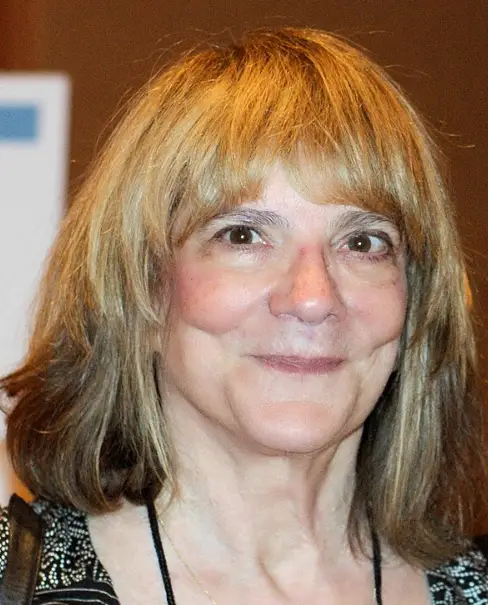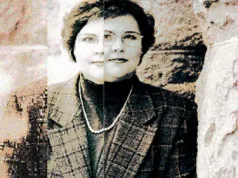Elizabeth F. Loftus is a well-known psychologist that is known for her widescale contributions towards the belief that recovered memories should not be trusted, as they can easily be false.
Loftus staunchly believes that memory is highly malleable, and very susceptible to contamination. She backed up her opinions with several studies.
Loftus is a venerated figure in psychology, as evidenced by her position in the peer-voted top 100 psychologists of the 20th Century, where she placed 58th [1].

Difficult upbringing
As mentioned, Loftus has become one of the most well-known psychologists within the last few decades.
However, Loftus had a troubled childhood. Unfortunately, she was sexually abused in her youth, while her mother passed away when Loftus was just 14.
But Loftus refused to let these events impact her. This has made her eventual success all the more impressive.
Recovered Memories Hit the Headlines
But while her work was impressive, the phenomenon of memory was relatively niche at first. But in the 1980s, a raft of cases involving seemingly uncovered memories arose.
Suggestions were that many people in their adult years had remembered childhood abuse, and thus threw an allegation at someone – often their parents. Dozens of cases like this arose, many of which became a cause de celebre.
But with cases frequently becoming national stories, suddenly the spotlight was thrust on to these cases.
As the vast majority accused of abuse denied the accusations, it was questioned how one could trust a seemingly forgotten memory – especially without corroboration. Many people were being charged with crimes that they hadn’t committed.
Many topics in psychology are universally accepted. Memory is the total opposite. The argument over whether or not traumatic events can be buried in the mind, only to then reappear – has been questioned.
While some believe they are true, others state that therapists can unwittingly implant these memories using suggestive techniques.
Enter Loftus
Loftus is best-known for her arguments against the idea of traumatic memories being able to be recovered.
She has pointed to a variety of areas against the idea that the mind is fully accurate in its recall. She suggests the mind can be affected by what we expect to see, what we’re told we’ve seen, what we want to see, and what we are asked to see.
As mentioned earlier, Loftus has a glittering array of research studies that she has conducted to back up her claims:
The Lost in the Mall Study [2]
One of the best-known studies from Loftus is known as the ‘Lost in the mall‘ technique [2]. This study has had a significant impact on the study of memory.
Loftus, her undergraduate student Jim Coan and Jacqueline E. Pickrell conducted a study that aimed to show how a fictional memory could be implanted into a person’s psyche [2]. The study used 24 participants.
In the study, the group gave the participants a few different short narratives – all of which had supposedly been provided by family members talking about childhood events.
However, one of the short narratives was fictional, and revolved around the person ostensibly getting lost in a mall at the age of 5 or 6. The narratives suggested that they would eventually be reunited with the family after an elder person intervened.
When each person was asked about whether or not they could remember each of the narratives taking place, 5 of the 24 participants recalled the ‘memory’ – despite it being totally fictitious.
Loftus concluded that just by imagining events, that false memories could be created. There was some criticism of the methodology, small sample size and the fact that being lost in a mall is a common occurrence [3].
However, in later studies using a similar technique, the same methodology led to participants recalling bizarre incidents like being the victim of an animal attack [2].
This study showed how easily a false memory could be implanted, and would serve as a key argument against recovered memory for decades.
Misinformation [4]
Another study by Loftus, which included David Miller and Helen Burns, sought to see whether or not eyewitness testimony could be trusted [4].
This referred to cases where a person had supposedly witnessed an event or action, and therefore were entrusted with detailing what they saw in a court of law.
In her study, she was aiming to see if information provided after the event/action could alter an eyewitnesses’ memory [4].
The study involved getting participants to watch a series of slides focused on a supposed car crash. The first series of slides involved a car stopping in front of a stop sign. Participants were asked at the end of the slides to read a description of what they had seen [4].
Some participants were given false information – omitting the stop sign, and instead a ‘yield’ sign. Afterwards, participants were asked what they saw, with the results showing that many recalled the yield sign – just because they saw the description which suggested this was the case [4].
This again seemingly showed the ease of which memory can change. This study has been backed up by similar studies since.
Other Research
Loftus’ research led to many other conclusions too. She found that word association was crucial when asking someone about a prior event.
For example, asking someone if they had seen ‘a’ sign didn’t result in as many saying ‘yes’ compared to if someone was asked if they had seen ‘the’ sign [5].
Loftus later found that once a therapist had told a patient their symptoms suggested they were ‘quite likely’ to have been abused, the person may be inclined to create a scenario when given the information by the therapist [6].
Famous Cases
Loftus has engaged in hundreds of criminal cases revolving around childhood sexual abuse involving uncovered memories. She has been a defence witness expert, with her telling juries about her evidence to suggest false memories can be implanted, using the above studies as evidence for this argument.
Loftus has become the most prolific defence witness in abuse claims, overtaking the mantle from Ralph Underwager.
One of her landmark cases came in the case of Gary Ramona – a man who had been accused by his daughter of sexual abuse. His daughter Holly had recalled the alleged abuse during a therapy session where she was being treated for bulimia nervosa.
Loftus noted that the process that people seemingly accept such allegations was ‘preposterous’. She suggested that in such cases, therapists may try and guide a patient’s thinking to the point where they continue until they find something that fits a description.
Loftus led the charge as a range of professionals helped Ramona to success in the trial. Ramona subsequently sued his daughter’s therapist in a landmark decision, being awarded almost $500,000 in compensation.
Following the Ramona case, a difference was noted in court cases, with more pressure on prosecutors to find additional evidence to supplement an uncovered memory.
In the years following these cases, the reliability of uncovered memories gradually diminished in psychology. All the way into the present day, recovered memories aren’t seen as permissible in court.
Other well-known memory-related court cases she testified in include those of George Franklin and the infamous McMartin Preschool Abuse case.
To this day Loftus continues to make sporadic court appearances. In memory-related cases that she isn’t a part of, her various studies are still use to substantiate the defence of the accused.
Controversy
Given her position for supporting something rather provocative, it is unsurprising that Loftus has attracted some controversy. Many of her studies have been criticised, with some pointing to small study sizes, generalising findings and even exaggerating results – all of which Loftus has strenuously denied.
Loftus’ career did have one particularly controversial study, known as the ‘Jane Doe case’. Following a study which suggested a person allegedly remembered a recovered memory of childhood sexual abuse completely accurately, Loftus – together with colleague Melvin Guyer – aimed to disprove this.
Through research, the duo found that one of the authors of the study had omitted some information which seemed to suggest the memory was actually false.
Jane Doe herself – actually a woman called Nicole Taus – complained to the employers of Loftus and Guyer about a breach of privacy.
The employer – the University of Washington, criticised the pair, leading to an investigation. Five years later Loftus was cleared of wrongdoing, but had seen her reputation knocked in that time.
Loftus subsequently published the study. In response, Taus pressed on with her accusations, leading to a lawsuit being filed over emotional distress, invasion of privacy and other charges. A small settlement of $7,500 was later agreed.
She has also attracted criticism over defending individuals like Ted Bundy, Harvey Weinstein, O.J. Simpson and Michael Jackson.
In interviews, she has openly admitted that she was ‘hated’ by some prosecutors, was attacked when recognised on a plane, and has been sent death threats.
Legacy
Few have helped as many people as Elizabeth Loftus – given her role in defending hundreds of clients. There are legitimate questions over whether or not uncovered memories are to be deemed genuine.
Loftus has given a voice to those accused, and helped to defend many innocent people. Others may point to her assisting the guilty.
Loftus, along with Underwager, are credited with having ushered in a new era of judging recovered memory. Depending on which side of the debate someone is on, this may be considered a good thing, or a bad thing.
Summary
Elizabeth Loftus continues to be a very respected psychologist. She has made an enormous impact on psychology, especially in the annuls of repressed or hidden memories.
In a time where it was against the majority in terms of questioning certain cases, Loftus was willing to adopt a provocative stance. Many, many people are happy she did.
VISIT OUR RECOVERED MEMORY BLOG
The feature picture comes courtesy of Wikimedia Commons: https://commons.wikimedia.org/wiki/File:Elizabeth_Loftus-TAM_9-July_2011.JPG.
Disclaimer
This website should be used purely for informational purposes, and does not intend to, nor should it ever, be used as a replacement for professional medical advice.
We strive to keep all of our pages updated, and ensure that our website is full of factual and in-depth information. However, we encourage you to browse this website with care.
As a reminder, this website and all content within it cannot and should not replace the advice of a trained medical professional. You can read our full disclaimer at this link.
Helplines
If you are struggling with your mental health, help is available. With the right support and treatment, you can make a recovery. For information on helplines, or if you are in a state of crisis, please visit our crisis page by clicking on the relevant link for your geographical location (United Kingdom), (United States), (International). You can also see how to get mental health treatment and the process involved by clicking this link.
References
[1] Haggbloom, S., Warnick, R., Warnick, J. & Jones, V. (2002). The 100 Most Eminent Psychologists of the 20th Century. The Review of General Psychology. 6 (2), p139-152.
[2] Loftus, E., Coan, J. & Pickrell, J. (1996). Manufacturing False Memories Using Bits of Reality. In: Reders, L Implicit Memory and Metacognition. New Jersey: Lawrence Erlbaum Associates. p195-221.
[3] Blizard, R. & Shaw, M. (2019). Lost-in-the-Mall: False Memory or False Defense?. Journal of Child Custidy. 16 (1), p20-41.
[4] Loftus, E., Miller, D., Burns, J. (1978). Semantic Integration of Verbal Information into a Visual Memory. Journal of Experimental Psychology Human Learning and Memory. 4 (1), p19-31.
[5] Loftus, E. (1975). Reconstructing memory: The incredible eyewitness. Jurimetrics Journal. 15 (3), p188-193.
[6] Loftus, E. (1993). The reality of repressed memories. American Psychologist. 48 (5), p518-537.

































